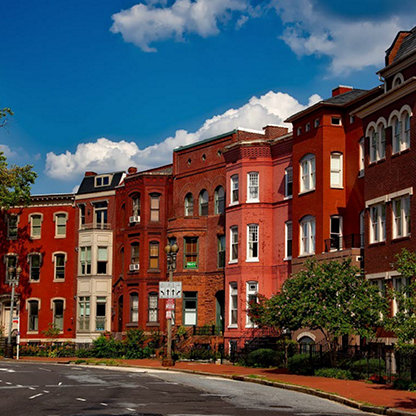It is a strange paradox that, in the midst of the huge contraction in economic activity, housing markets across the globe have generally remained resilient. Indeed, in some cases, the market is booming. This can, to a greater or lesser extent, be attributed to the range of direct and broader macro interventions made by governments. These, alongside supportive monetary policies, have helped anchor mortgage finance costs at historic lows.
Critically, although unemployment is increasing, it has yet to reach the highs initially anticipated and generally remains some way short of what has been experienced in past recessions. As a result, there has been no real uplift in the property repossessions and forced sales that typically characterise the worst downturns.
The resilience of the market in the face of a broader onslaught on the macro economy casts a glimmer of light on an otherwise gloomy narrative. Housing transactions generate activity in two ways. There is a direct impact, created by professions and professionals supporting the sales process, and an indirect impact, through related spending on consumer durables associated with home moves. Moreover, rising house prices are often seen as boosting the wealth of the household sector by lifting the value of assets they own. This sustains spending beyond what might otherwise have been the case.
“The resilience of the housing market in the face of a broader onslaught on the macro economy casts a glimmer of light on an otherwise gloomy narrative.”
The banking sector has also been able to breathe a collective sigh of relief. In many countries, lenders are rather better capitalised than in the past, and so in more robust shape to address the challenge of falling house prices. Governments have, in some cases, actively assisted by helping to fund mortgage holidays. There is also a sense, talking in very broad-brush terms, that lenders are displaying greater levels of forbearance. This is both understandable and commendable; behind every repossessed home is a household facing acute distress and often much worse.
Yet I do wonder whether something more troublesome is percolating, as an upshot of housing policy that predates the pandemic response. Greenspan Put is the term used to describe the approach pursued by the US Federal Reserve in the wake of the 1987 stock market crash. Then, the authorities responded to weakness in the equity market by taking steps to reverse it. The strategy caused investors to believe that there was something of a floor on the downside, which in turn generated favourable bias to rising, speculative markets. I would not describe the current situation around residential property in quite the same way but there are some parallels.
One visible indicator is that, from an investor perspective, the valuation placed on housing in some markets is becoming ever more stretched. Typically, this can be viewed by comparing the price of a home against the owner’s income, or the income it can generate on the rental market. Of course, investment is not the only reason that houses are bought; nevertheless, valuation can drive marginal buyer activity and, therefore, influence the wider market. This has the potential to create the conditions for a bigger adjustment in residential prices when the macro environment becomes overwhelming. For an example from living memory, see the effect on the stock market when the internet boom hit the rocks in the early noughties.
A key chapter in the recently released UBS Global Real Estate Bubble Index 2020 was titled Long term prospects called into question. If that choice of words is careful, the detailed analysis is rather more forthright. Most notably, it draws attention to the diminishing appeal of the sector for buy-to-let investors. “Price to rent ratios have reached a record high,” caution the report’s authors. “Rental growth is uncertain…in this environment selling properties warrants attention.”
But, in a way, this is not my real concern. I am far from convinced that, even in the hottest markets (Munich, Frankfurt, Toronto), a sharp fall in prices is imminent. Interest rates are set to remain low for the foreseeable future. What’s more, with a suite of effective COVID-19 vaccines soon to be rolled out, a macro recovery in some shape will begin to establish itself in 2021. No, the bigger question is what current trends, if sustained, will mean for affordability and accessibility of housing more generally. After all, strong housing markets have been among the key drivers of the rise in inequality seen in many advanced economies. It’s an issue that appears to be growing in importance for governments of all political persuasions.
“Strong housing markets have been among the key drivers of the rise in inequality seen in many advanced economies. It’s an issue that appears to be growing in importance for governments of all political persuasions.”
The response to this challenge has been wide ranging, albeit rather piecemeal. Some governments have looked to embrace controls over rent levels; others have explored routes to lower cost home ownership through discounts and subsidies. There has also been much debate around housing supply and whether it has the potential to be the solution in a world where money is so cheap. Arguably missing from the debate has been the recognition that the housing market is just that: a market. Prices can go down as well as up. A home is not, and nor should it be, a risk-free asset. Perhaps the lesson that should have been learned in the aftermath of the Global Financial Crisis is that homeownership is not appropriate for everyone.
We are now entering a fourth quarter of global economic strife. The fact that the housing market has generally remained well supported through this turmoil is to be welcomed. It has, in all probability, softened the downturn in business activity. But looking beyond the end of the pandemic, there are few long-run benefits to a housing market that only ever becomes more expensive and less accessible.




